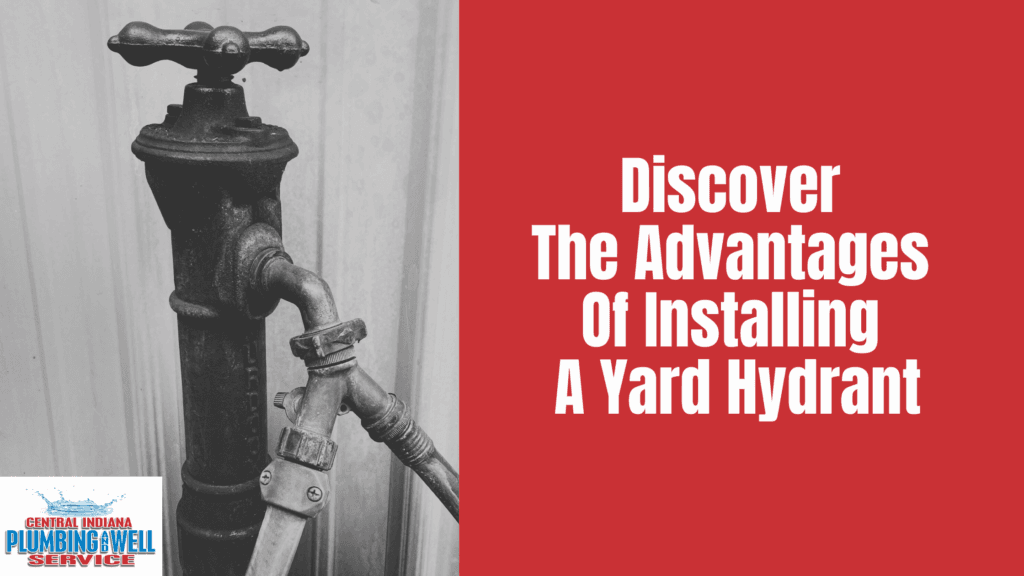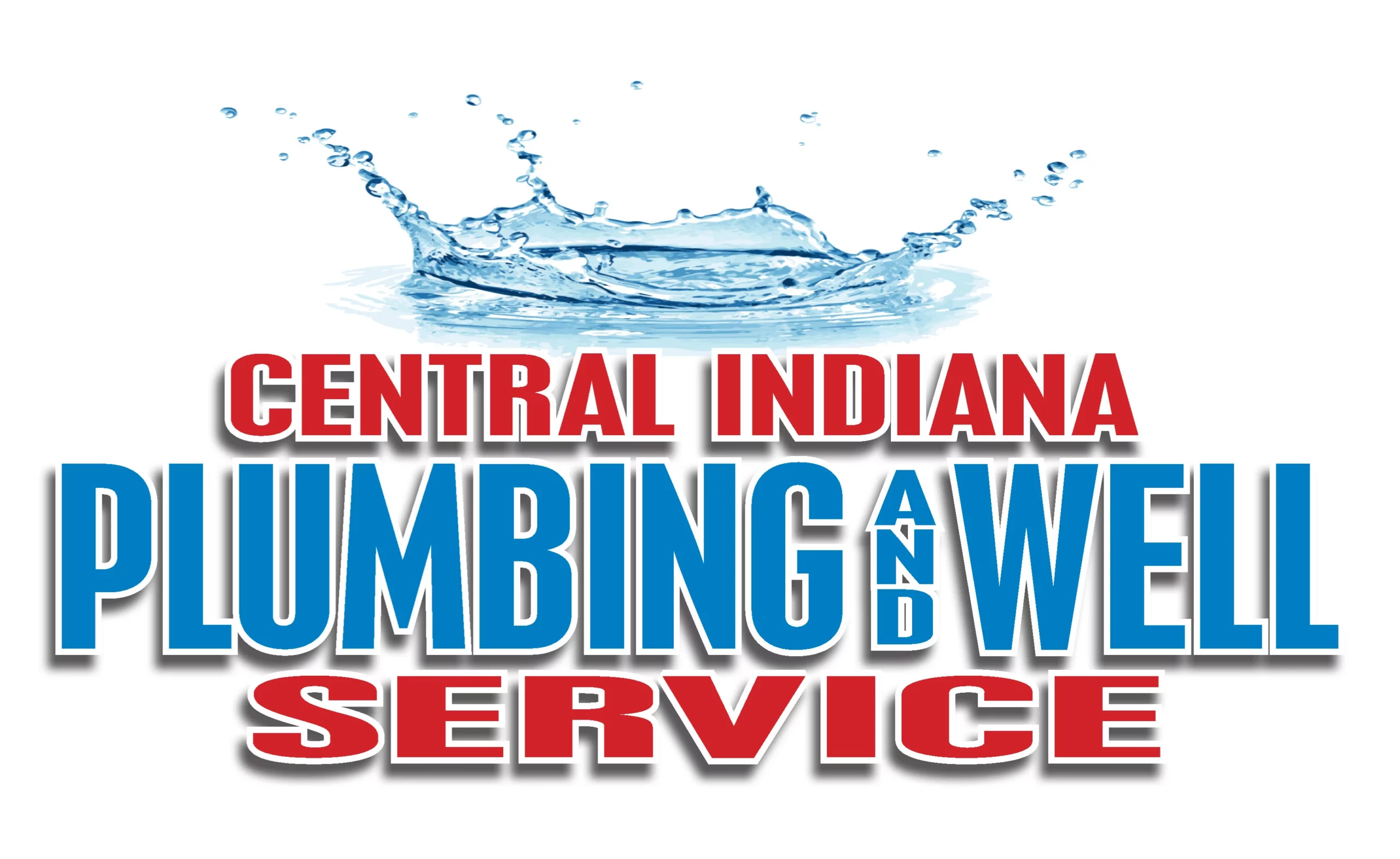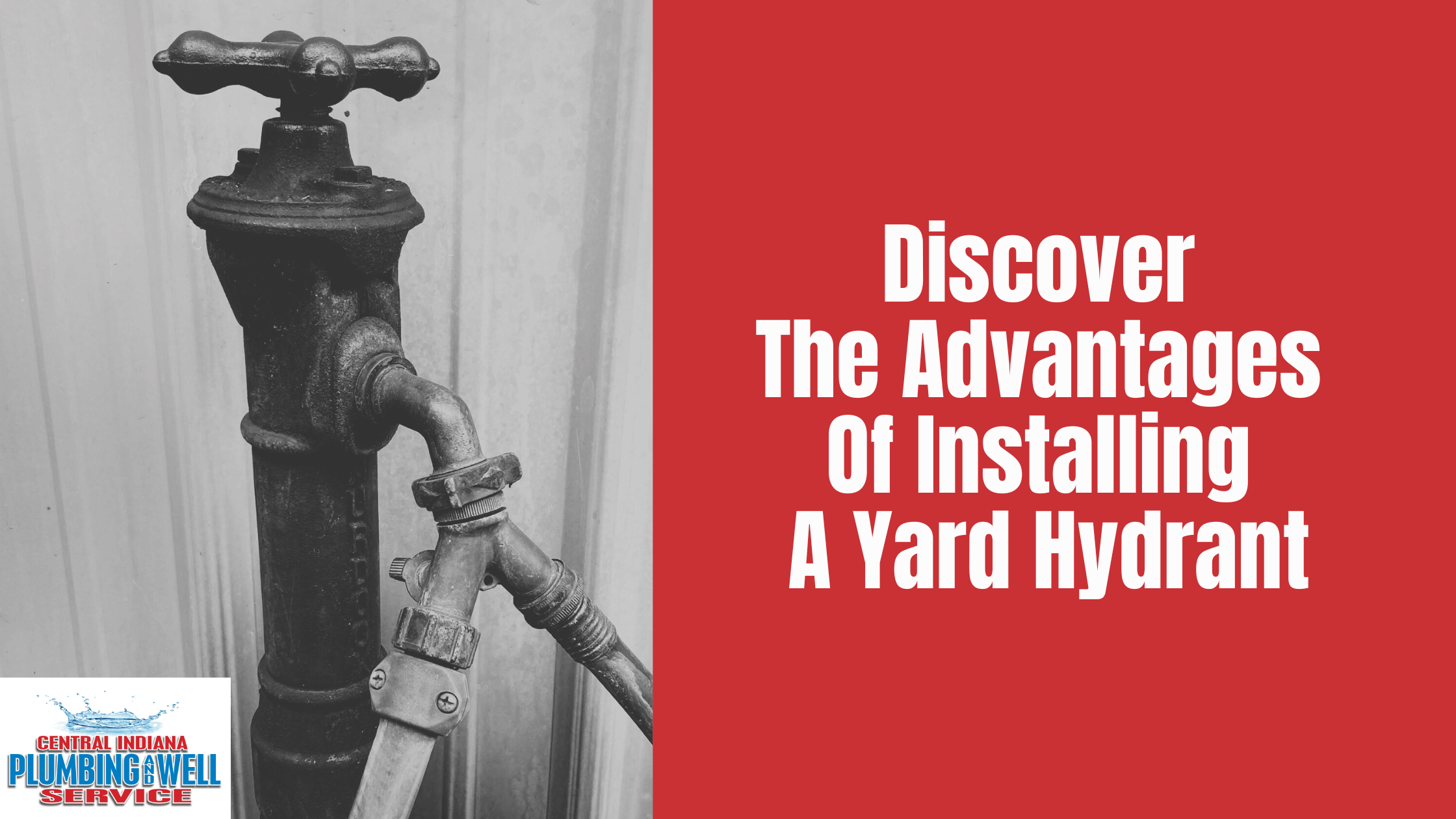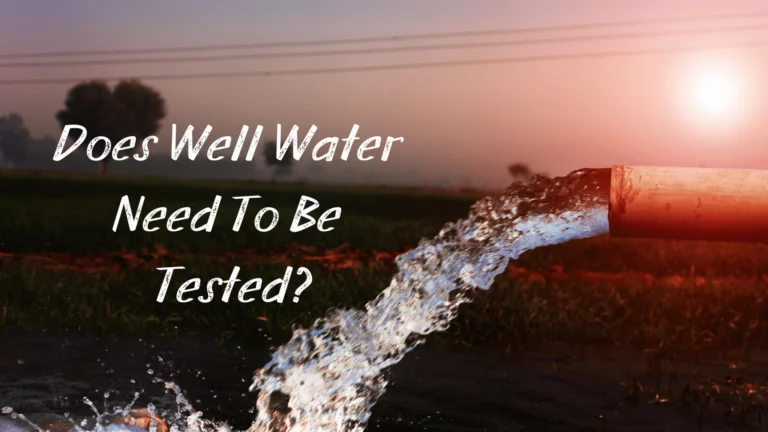
How does Central Indiana Plumbing and Well Service install a yard hydrant?
We first have to dig up the place where it is going to be installed. We typically like to have a line coming out from the house from the plumbing system with a valve you can shut on and off. We dig a trench out to where you want that installed. Typically we use a five gallon bucket to fill up with gravel so that way when it weeps out it has somewhere to weep the water out when you shut it off so that way it is frost proof and it doesn’t freeze in the winter time. We also cover the bucket so dirt doesn’t infiltrate the bucket and cover up the weep hole.
How deep do you bury the yard hydrant?
Different counties have different codes. Here in Central Indiana the code is around 42 inches. We typically like to bury the 48 inches deep just to have that extra protection.
Can a yard hydrant leak underground?
Yes it can. They actually have a weep hole that is designed to let water out when you shut it off. However it should not be releasing water while it is operating or shut off after it weeps out what is in the vertical riser pipe. If you have a well pump, it is going to cause your well pump to run additionally when you are not running water so you will most likely see an increase in your electric bill or you might hear the pump running or the switch triggering. If you have city water what you will typically notice is a higher water bill.
Do you winterize a yard hydrant?
Central Indiana Plumbing and Well Service uses a frost proof hydrant that are designed to let the water out below the frost level. That’s also why we bury them at 48 inches deep so it can release that water that is in the vertical section of the pipe. A good quality yard hydrant you should never have to winterize.
Is a yard hydrant the same thing as a hose Bibb?
In theory a yard hydrant is similar to a hose bibb. They shut the water off, especially a frost proof hose bibb on the side of a house or wall hydrant. It shuts the water off inside away from where the water can freeze. The same with the yard hydrant it shuts the water off below frost level and allows it to run out. So they are similar in their design.
What are the benefits of having a yard hydrant?
- It is convenient to have a yard hydrant to water your garden.
- It makes it easy to have a sprinkler system nearby.
- I install a lot of yard hydrants in farm settings where people are watering their animals and livestock. Farmers like to have a yard hydrant to water their livestock and animals.
- It’s pretty convenient to have running water out in your yard and you don’t have to stretch a hose nearly as far.
- Yard hydrants can put out a bit more water than most wall hydrants. Typically a yard hydrant is 3 quarter or 1 inch inlet so you can get quite a bit more water through that than a standard half inch line in a wall hydrant in a house.
What is the size of a standard yard hydrant height?
Typically a 3 quarter to one inch are the standard sizes for those. You can go with larger sizes. If you need more water like perhaps you’re running a pressure washer on an industrial scale or commercial scale. A lot of the farms require a lot more water so they’re using larger pressure washers for to clean their farm equipment. We can go all the way up to 2 to 3 inches if needed.
If you want to have us replace or install a new yard hydrant for you. You can reach us by phone (765) 336-9808 Especially if you have a plumbing emergency. Also see our complete list of services here: https://centralindianaplumber.com/residential/
Follow us on Facebook: https://www.facebook.com/wellpumpman and YouTube: https://www.youtube.com/channel/UCHfReG4F470hyboDKmqO-MQ





Thank you for sharing your knowledge!